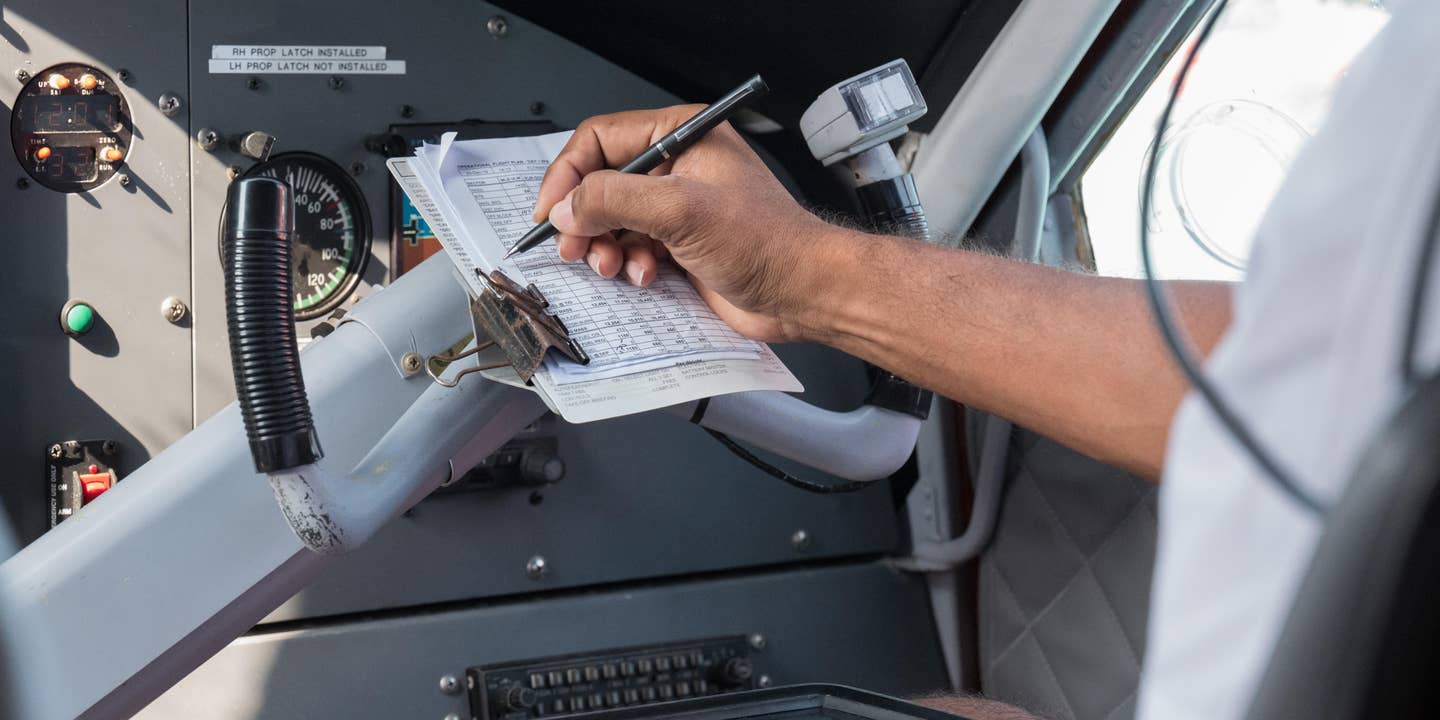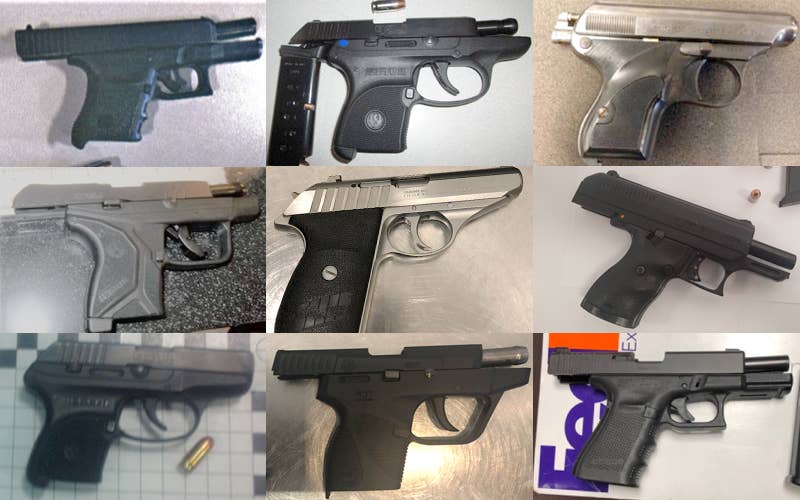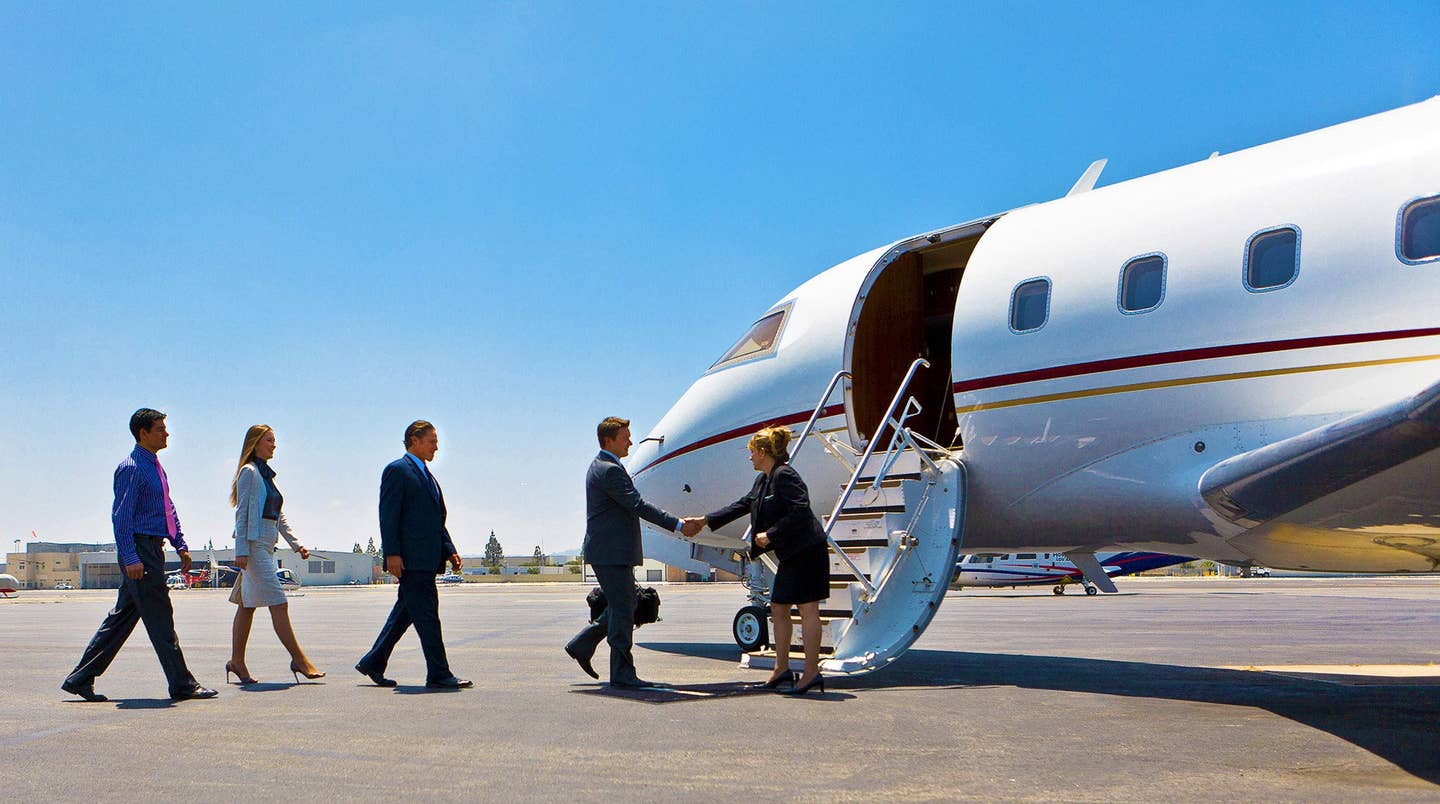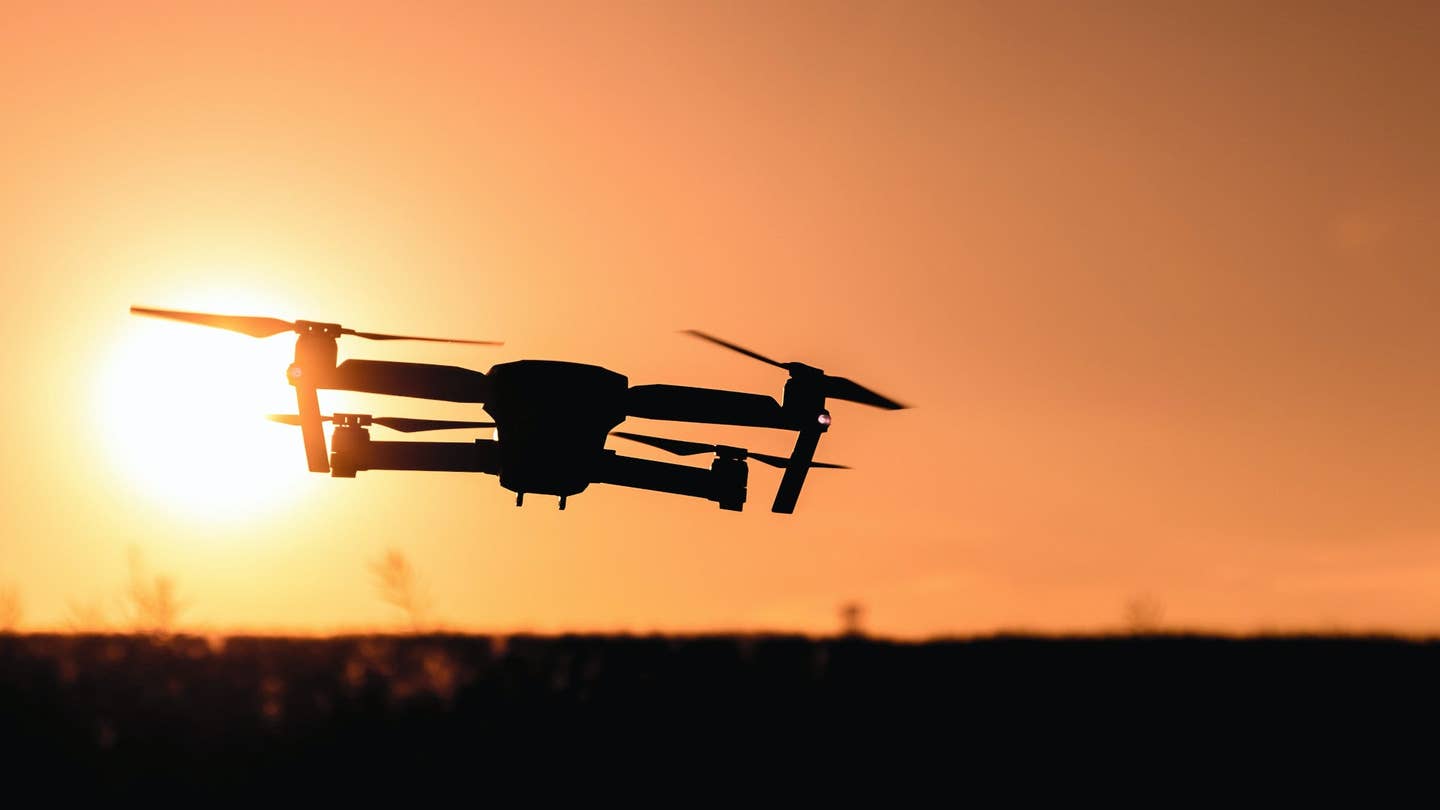
Flying checks for private pilots refer to preflight actions as well as in-flight procedures and verifications. [Credit: CanvaPro]
“Kick the tires and light the fires” is a cheeky reference to preflight checks and engine starts - but is not a best practice for before flight actions for any aviator. Whatever stage of flying you are in, preflight checks before takeoff are a necessary element of your flight.
“Preflight action” is so important that the Federal Aviation Administration (FAA) has dedicated a regulation to it: 14 CFR § 91.103. This regulation says that pilots must, before starting a flight, “become familiar with all available information concerning that flight.”
Among other things, this also means that pilots must have a destination in mind before they take off. FAR 91.103 is often cited as a “catch-all” regulation for examiners and inspectors - meaning pilots can be cited for not following this regulation for all kinds of flight mishaps - such as events involving weather reports, fuel requirements, alternate airports, and TFRs.
What Are Flying Checks?
Flying checks refer to preflight actions, in-flight procedures and verifications, and landing checklists, all of which often involve written checklists. The FAA says in 14 CFR § 91.503, pilots need to have checklists accessible at their “pilot station.” Many pilots and aviation safety advocates believe that 14 CFR §91.13 (careless or reckless operations) compels pilots to use checklists.
For private pilots, the use of checklists goes beyond just good practice. The FAA’s Private Pilot Airman Certification Standards (ACS), in Appendix 6, titled Safety of Flight, states “throughout the practical test, the applicant is evaluated on the use of an appropriate checklist.”
Why Flying Checks Are Important
Pilots are responsible for far more than moving an aircraft from one location to another. Flying checks are critical for keeping pilots, crew, passengers, and people on the ground safe. During the learning phases of flying, certified flight instructors (CFIs) are legally responsible for ensuring flying checks are accomplished prior to takeoff.
When you become PIC and are responsible for a flight, you will be responsible for evaluating all aspects of the flight and making a “go” or “no go” decision.
What Procedures Are Included in Flying Checks?
Preflight checks should be thorough, and based on the aircraft and the manufacturer’s specifications, as well as your mission. Pilots often divide tasks on where they are completed:
External Checks
External checks refer to things pilots should look for outside of the aircraft. These items will vary greatly based on aircraft type and storage location (hangar vs. ramp), but generally will include:
- Checking pitot tubes, fuel vents, static ports, and other probes and indicators
- Checking the condition and presence of landing gear locks and steering pins
- Looking at brake wear indicators that signal further inspection by a mechanic or that brake maintenance may be necessary
- Checking tire condition and inflation levels
- Checking the quantity of fluids and for signs of leakage from the aircraft.
- Looking for foreign objects, ranging from covers and cowl inlet plugs to birds nests or other debris
- Checking for the general condition while looking for missing or worn elements of the aircraft such as broken piano hinges or missing cotter pins.
- Checking for the presence of even small amounts of frost, ice, or snow on the aircraft.
Internal Checks
Internal checks take place inside the aircraft, typically while seated in the flight deck. Again, these items will vary greatly based on aircraft type and installed avionics, but generally include:
- Making sure the altimeter(s) is/are properly set
- Setting the cabin pressure for the destination airport (if applicable).
- Checking indicated fuel level versus flight requirements
- Checking and setting the trim for takeoff
- Checking the autopilot, if installed
- Verifying the flight plan and radio frequencies are correct
- Ensuring flight controls are functioning correctly.
There are many examples of aircraft accidents that could have been prevented with proper preflight checks. A fatal Cessna 340 crash on November 13, 2001 involved a pilot attempting to take off without removing the control gust lock prior to takeoff.
The pilot was an Airline Transport Pilot (ATP) with more than 6,200 hours of experience. The probable cause of the accident was “the pilot's failure to remove the control gust lock prior to takeoff and his failure to abort the takeoff with sufficient runway remaining to stop the airplane on the runway.”
Six Methods to Pre-Flight Checks
Preflight checks should be specific to the type of aircraft and follow the manufacturer’s published recommendations. Whether it is a small trainer airplane, a helicopter, a corporate jet, or a transport category airliner, the pilot in command must be sure the aircraft is airworthy and the crew, passengers, and/or cargo are all fit for flight.
With the acceptance of Specification No. 1 prepared by the General Aviation Manufacturers Association (GAMA), all general aviation airplane and helicopter flight manuals and pilot operating handbooks (POHs) now follow the same standardized format. Preflight checks are referenced in POH’s under Normal Procedures (Section 4).
There are numerous methods of preflight checks that pilots use:
ARROW Check
A common training mnemonic for the documents that must be on board an aircraft is ARROW. The ARROW checklist refers to:
- Airworthiness Certificate
- Registration Certificate
- Radio Station License (required only for international flights only)
- Operating Handbook
- Weight and Balance
Some CFIs/DPEs make the argument that the ARROW checklist should really just be “ARO” because the Radio Station License is not required for domestic flights and the “W” (weight and balance) is part of the operating limitations.
Aircraft Logs
Aircraft logs should be checked to make sure a plane is legal to fly and has had required inspections and maintenance events and complied with inspections required under 14 CFR § 91.409.
Maintenance-related issues are a common contributor to general aviation accidents. Following any maintenance event such as a 100-hr inspection or annual inspection, the FAA recommends pilots conduct a thorough preflight “beyond the normal preflight checklist.”
This may include reviewing log entries for the work performed, and asking what was removed or disconnected to facilitate work performed, such as control cables, linkages, fuel lines, and exterior and interior access panels.
Cockpit Check
Cockpit checks include pre-flight checklist items listed in the POH and avionics set up for the flight plan. Along with POH items and aircraft checks, pilots should also ensure they have charts and information for destination airports and alternates.
Rigged Controls
The National Transportation Safety Board (NTSB) has published a safety alert addressing how incorrect rigging of flight control and trim systems can lead to in-flight emergencies, accidents, and preventable deaths.
Aircraft maintenance manuals detail rigging procedures and proper rigging ensures flight controls are correctly adjusted for the proper amount of deflection along with appropriate cable tension, if applicable. In aircraft with dual controls, controls must be synchronized when they are operated from either the left seat or the right seat.
Fuel System
Fuel should be checked for the proper grade, amount, and contamination (water or sediment). The fuel tank vent must also be checked to make sure outside air can enter the tank as fuel is burned off.
The FAA recommends pilots use a flashlight to inspect the fuel vents and ensure they are free from obstructions or damage. A rush of air when a fuel tank cap is cracked can be an indicator of a problem with the fuel vent system.
Preflight Cleanup
Cleaning the windshield may be one of the last items before the flight. A dirty windshield reduces forward visibility. A windshield check should be part of a preflight to determine if cleaning is necessary.
Most GA windshields are made of acrylic and scratch easily with paper towels being a particular offender in this regard. Pilatus Aircraft cautions pilots in the PC-12 POH against using common household glass cleaners and recommends removing watches and jewelry prior to cleaning plastic windows due to their sensitivity. Clean microfiber cloths and approved cleaning spray are best.
Other Aviation Checklists
Different missions may require specific preflight inspections. For example, a flight going into known icing conditions may require deicing equipment checks. A pilot conducting a banner tow flight should preflight towlines, hook lines, or grapple lines before flight.
If you fly for a company operating under a certificate, you may have additional required checklists for preflights and in-flight operations - such as aircraft operations under 14 CFR Parts 91K, 121, 125, and 135. These regulations pertain to airline operations, charter operations, and certain other types of commercial flights.
Master Your Preflight Checks and Be a Preflight Pro
No matter how many times you do a preflight, it is never a waste of time. Pilots who have learned painful lessons from in-flight problems that could have been discovered on the ground will be quick to advocate for taking the time to ensure the safety of flight and properly complete preflight checks.
FlyingMag provides resources for pilots in all stages of flight training and flying. To stay informed on all of the latest in aviation, subscribe to the FLYING Magazine newsletter today.
FAQ
Do experienced pilots do pre-flight checks?
All pilots should do pre-flight checks, no matter how experienced they are. Experienced pilots may be able to do preflight checks faster because they are more familiar with the aircraft, but they should never skip checklist steps.
How long are pre-flight checks?
Preflight checks should be as long as necessary to cover all aspects of the aircraft and specific mission. Some checks may be longer than others. For example, preflight checks may be more thorough if you are flying an aircraft you’ve never flown before, or planning a longer cross-country flight with possible en-route weather.
How long does a pre-flight check take?
There is never any specific time period for preflight checks. Pilots should not rush through preflight checks, and should take as much time as necessary to check the items required. Depending on your aircraft, you may need additional equipment to properly preflight. High wing fixed wing aircraft and many helicopters may benefit from a ladder for access to items such as fuel caps or rotor hubs and a proper preflight, gliders excepted, will almost always require a fuel sampling device or cup. Take your time to understand your aircraft and ensure both plane and pilot are ready for flight.

Subscribe to Our Newsletter
Get the latest FLYING stories delivered directly to your inbox






